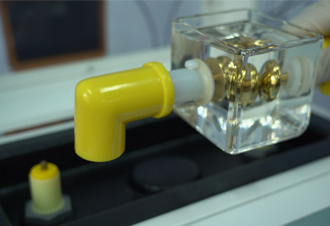 English
English


Current Transformer Ratio Test - Accurate Measurement Solutions
Understanding the Current Transformer Ratio Test
Current transformers (CTs) play a crucial role in electrical engineering by stepping down high current levels to manageable values for measuring and control purposes. One of the essential tests performed on current transformers is the ratio test, which evaluates the accuracy and performance of the CT in transforming high primary currents to lower secondary currents. This article delves into the significance and methodology of the current transformer ratio test.
The primary function of a current transformer is to produce a secondary current that is proportionate to the primary current flowing through its primary winding. The transformation ratio is defined as the ratio of the primary current to the secondary current. For example, if a CT has a primary rating of 1000A and a secondary rating of 5A, the ratio would be 2001. Ensuring that this ratio is accurate is vital for the proper operation of protective relays and metering devices connected to the CT.
The current transformer ratio test is typically conducted using a precision test set that allows for the application of known current levels to the primary winding while measuring the resultant current in the secondary winding. There are two main methods for performing the test the test can be conducted either in the field or in a controlled laboratory environment.
current transformer ratio test

In the field, the technician may use an AC source or specific CT test equipment to inject a known current through the primary side. The secondary current is then measured with an ammeter. The results are compared to the expected ratio based on the CT’s design specifications. Any deviations from the expected values could indicate potential problems, such as miswinding, saturation, or faults within the transformer.
Alternatively, in a laboratory setting, the test can be executed with specialized equipment that allows for more precise control and measurement of the currents involved. This environment minimizes external variables that could influence the results, allowing for a more accurate evaluation of the CT’s performance.
The ratio test is particularly important in commissioning new installations and during routine maintenance to ensure the reliability of the system. An accurate current transformer is essential for effective system protection and accurate energy measurement. Regular testing helps identify aged CTs that may need replacing, ensuring that the entire electrical system operates efficiently and safely.
In conclusion, the current transformer ratio test is a fundamental procedure that guarantees the integrity and performance of electrical systems. By maintaining accurate CT ratios, engineers can enhance protective relaying, metering accuracy, and overall system reliability. Regular testing and maintenance are vital to achieving these objectives in any electrical installation.
-
Differences between open cup flash point tester and closed cup flash point testerNewsOct.31,2024
-
The Reliable Load Tap ChangerNewsOct.23,2024
-
The Essential Guide to Hipot TestersNewsOct.23,2024
-
The Digital Insulation TesterNewsOct.23,2024
-
The Best Earth Loop Impedance Tester for SaleNewsOct.23,2024
-
Tan Delta Tester--The Essential Tool for Electrical Insulation TestingNewsOct.23,2024





